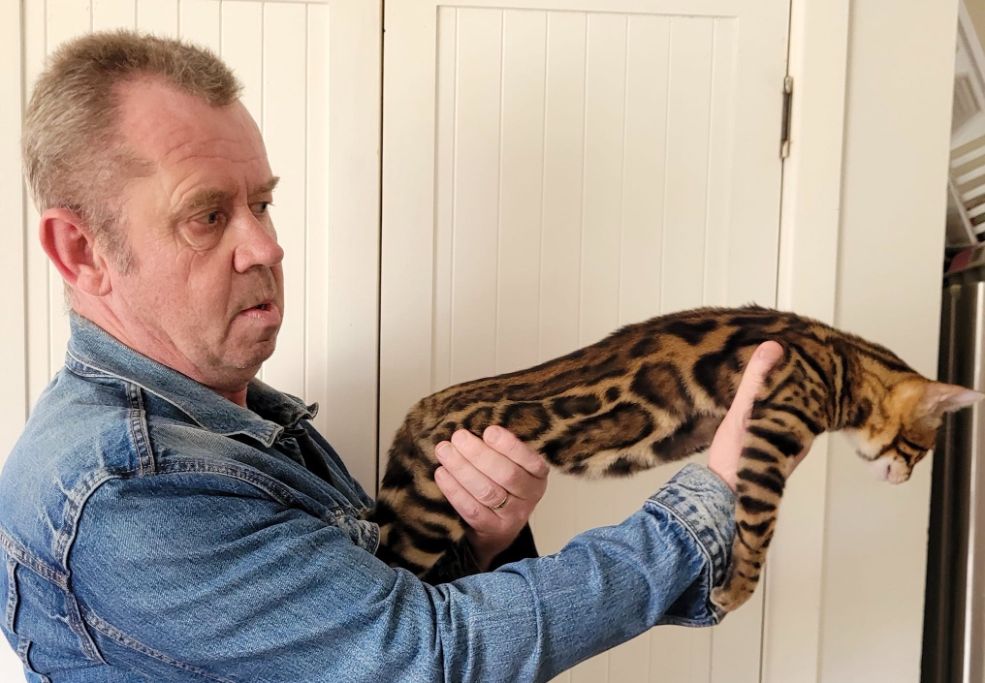Concern for native animal species has prompted a Southland council to monitor online pet sales, with a particular focus on Bengal cats.
But both the SPCA and a breeder say they are no more dangerous than other varieties.
This week, an Environment Southland chief executive report said staff were checking retail outlets and online sales sites for Bengal cats and other “high risk” pet sales.
Ownership of the breed requires a special permit in Southland, with a complete ban on Stewart Island/Rakiura.
In response to questions from Local Democracy Reporting, the council said Bengal cats were the main “high risk” pet it monitored.
“Bengal cats have a specific rule in Southland because they have genetic traits that make them dangerous predators to our native species,” Environment Southland biosecurity and biodiversity operations manager Ali Meade said.

“If Bengal cats were to breed with the feral cat population, they could have a major impact.”
The strong stance has received pushback, however, with an SPCA spokesperson saying Bengal cats were no more of a threat to native wildlife than other breeds of companion, stray or feral cats.
Parakai-based Bengal breeder Damian Vaughan agrees, slamming the council’s view of the leopard-looking creatures. Parakai is north of Auckland.
Vaughan said while all cats were predators by nature, Bengals had gained an unfair reputation.
“They’re just being picked on because they did come from wild origins being the Asian Leopard Cat, and they look wild because of their leopard markings. So it’s purely unjustified,” he said.
In order for a Bengal to be let into the country, it had to be five generations removed from the Asian Leopard Cat.
Those in New Zealand were now at least 10 generations removed, and were no more skilled at hunting than a “normal domestic cat”, Vaughan said.
“The real problem is feral cats, with wildlife.
“They’re going around with empty bellies, and they have to hunt to survive and eat.
“So they would be the ones that would decimate wildlife, not a Bengal that’s walking around with a big full belly.”
Vaughan said he had been breeding Bengals for 15 years.
Females could reach up to 6kg and males up to 8kg, with a lifespan similar to that of other domestic cats — around 16 years.
“I also have free range chickens running around and my cats have never touched one.”
Included in the list of websites monitored by the council was TradeMe, with staff contacting sellers directly to ensure they were compliant with regional rules
The council also monitored other pets such as birds and turtles because of the impact they could have on the ecosystem if released, Meade said.
“If the council receives a permit application for a Bengal cat, the permit process is followed and if appropriate, the owners will receive approval.”
The council had been monitoring "high risk" pet sales for many years, Meade said.
There are currently 24 exemptions issued for the ownership of Bengal cats in Southland, with people unable to apply for ownership on Stewart Island/Rakiura and other offshore islands.
According to the council report, there had been no new or concerning sales identified and no new applications for Bengal cat permits.



 Gordon Campbell: On Why We Can’t Survive Two More Years Of This
Gordon Campbell: On Why We Can’t Survive Two More Years Of This Lady Tureiti Moxon: Honouring Kahurangi Tariana Turia - A Legacy of Courage, Leadership, and Tino Rangatiratanga
Lady Tureiti Moxon: Honouring Kahurangi Tariana Turia - A Legacy of Courage, Leadership, and Tino Rangatiratanga Biosecurity NZ: Biosecurity NZ Investigating And Boosting Trapping After Auckland Fruit Fly Find
Biosecurity NZ: Biosecurity NZ Investigating And Boosting Trapping After Auckland Fruit Fly Find NZ Customs Service: New Year Begins With Customs Arrests For Three Alleged Drug Couriers
NZ Customs Service: New Year Begins With Customs Arrests For Three Alleged Drug Couriers Helen Leahy: Honourable Dr Dame Tariana Turia
Helen Leahy: Honourable Dr Dame Tariana Turia Animal Justice Party: Major Brands Linked To Alleged Widespread Animal Cruelty In New Zealand Wool Industry
Animal Justice Party: Major Brands Linked To Alleged Widespread Animal Cruelty In New Zealand Wool Industry NZ Police: Police officer killed following an incident in Nelson
NZ Police: Police officer killed following an incident in Nelson


